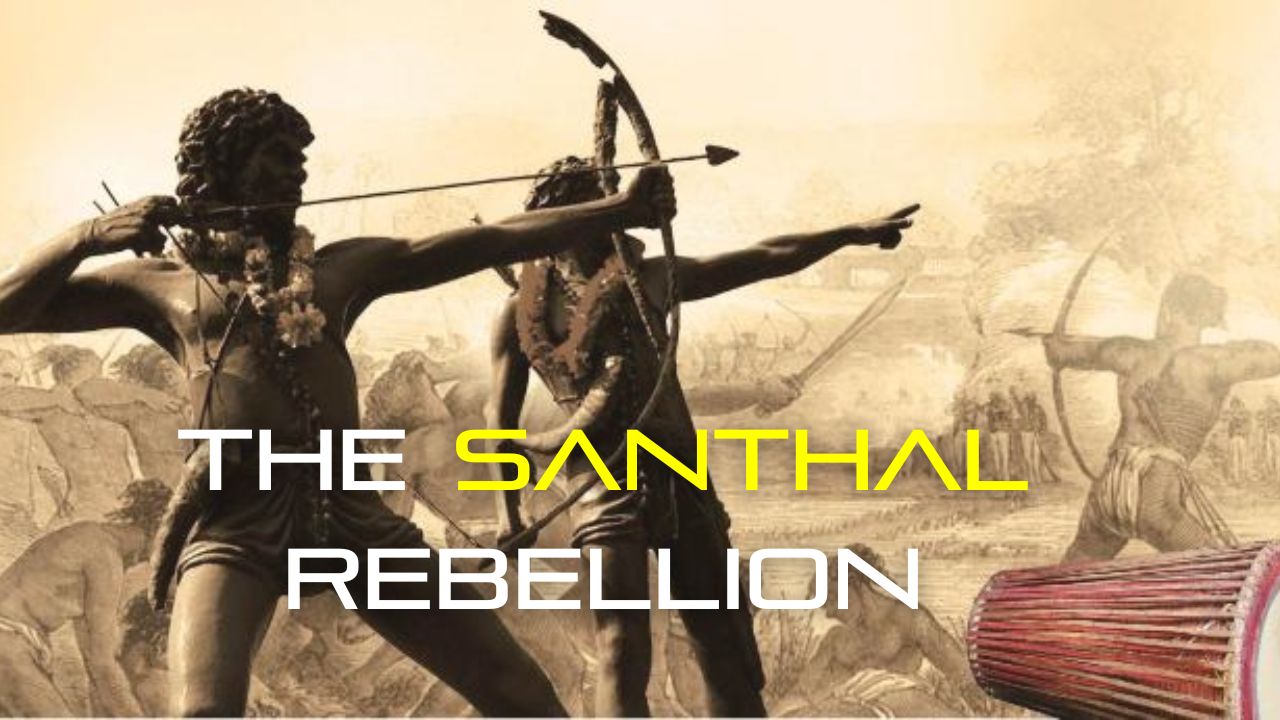Font size:
Print
The Santhal Rebellion: A Historic Uprising
Context:
The Santhal Hul of 1855 was a revolt against British imperialism led by four brothers, Sidho, Kanho, Chand, and Bhairav Murmu, along with their sisters Phulo and Jhano. June 30 marks the 169th anniversary of this significant peasant uprising, one of the first against British colonial oppression.
Background:
- Permanent Settlement System (1793): Introduced by Lord Cornwallis, this system granted landlords perpetual rights over land, leading to the exploitation of peasants.
- Demarcation of Damin-E-Koh (1832): The East India Company promised non-interference in this region, encouraging Santhals to settle there.
- Economic Hardship: Santhals faced high-interest loans and oppressive land taxes, losing control over their land and traditional lifestyle.
Causes of the Revolt:
- Exploitation by Zamindars: Santhals were oppressed by landlords who imposed heavy rents and taxes.
- Abolition of Traditional Panchayat System: The end of the Santhals’ traditional political institution, “Purha Panchayat.”
- Entry of Christian Missionaries: Under the Charter Act of 1813, the British government granted permission for religious propagation and conversion in the Santhal region.
- Debt Trap: Unfamiliar with money, Santhals borrowed from moneylenders at exorbitant rates, trapping them in debt.
- Loss of Land: Traditional Santhal lands were auctioned off by the British, leading to widespread resentment.
- Other reasons: The British government forcibly took labour from the Santhals without pay during the development of the Bhagalpur-Bardhaman rail project.
The Rebellion:
- Initial Revolt (June 30, 1855): Sidhu and Kanhu organised 10,000 Santhals in Bhognadih village and declared a revolt against the British.
- Guerrilla Tactics: Santhals used guerrilla warfare, targeting zamindars, moneylenders, and British properties. Around 60,000 Santhals participated, employing guerrilla tactics against the British and local exploiters.
- Divine Inspiration: The Murmu brothers claimed divine direction from their God, Thakur Bonga, to resist oppression.
- Major Conflicts: They captured large areas, including Rajmahal Hills,
- Bhagalpur district, and Birbhum.
- Duration: The rebellion lasted nearly six months, ending on January 3, 1856.
- Casualties: Over 15,000 Santhals were killed, and 10,000 villages were destroyed.
- Leaders’ Fate: Sidhu was hanged on August 9, 1855, and Kanhu in February 1856.
British Response:
- Military Action: British troops, initially unsuccessful, imposed martial law on November 10, 1855.
- Suppression: By January 3, 1856, British forces had killed around 15,000 Santhals, including Sidhu and Kanhu, and destroyed their villages.
Aftermath and Legacy:
- Santhal Parganas Tenancy Act (1876): The British enacted this act to offer some protection to Santhals against exploitation.
- Impact on Tribal Identity: The rebellion fostered a sense of unity and identity among Santhals, playing a significant role in the creation of Jharkhand in 2000.
- Lasting Influence: The rebellion inspired further movements for land rights and social justice, such as the Birsa Munda movement.
Significance:
- Agrarian Uprising: Unlike other revolts, the Santhal Rebellion focused on reclaiming traditional lands and economic freedom.
- Nationalism: It fostered a sense of nationalism among Santhals, contributing to future resistance against colonial rule.
- Cultural Identity: The rebellion reinforced the importance of preserving Santhal culture and traditions.





